The best down jackets: stay warm when the temperature drops
Our selection of the best down jackets have been tested hard against the winter chill
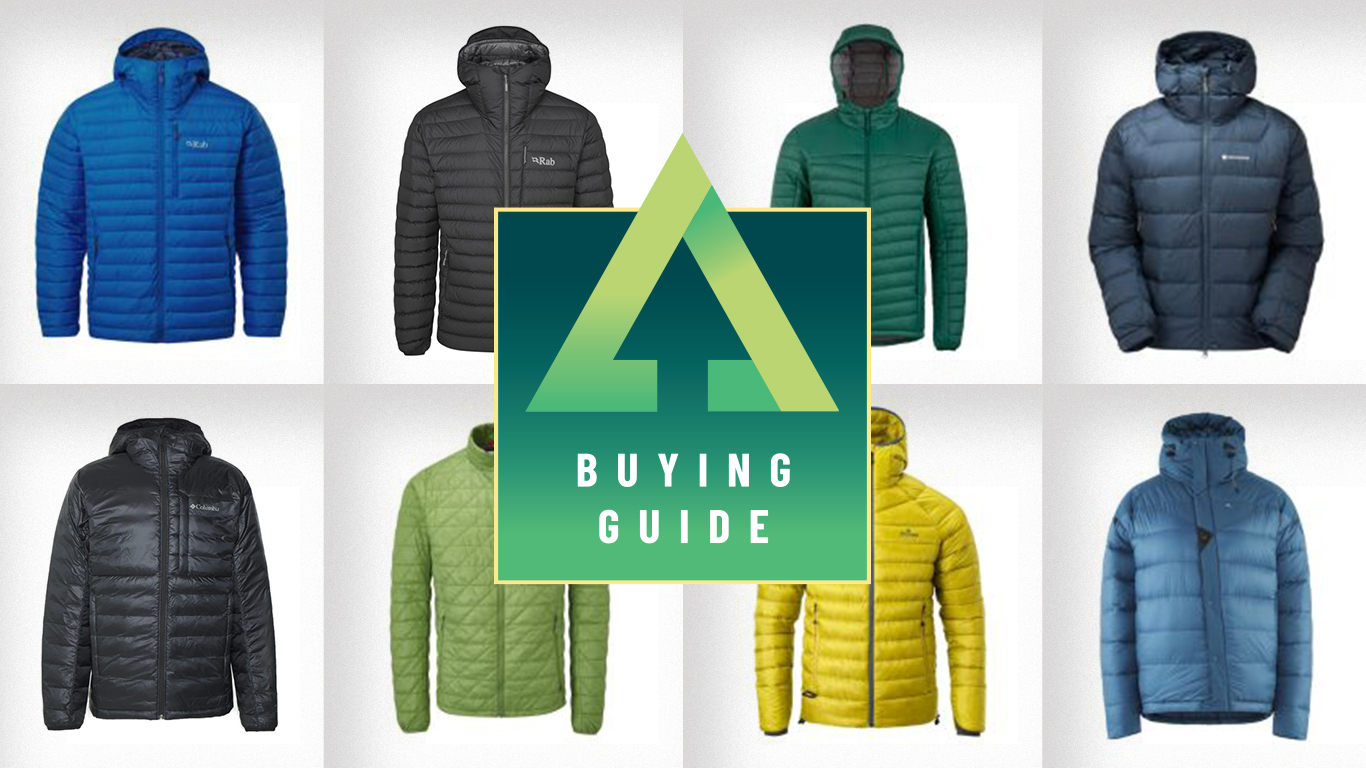
Wearing one of the best down jackets provides you with the warmth you need for your adventures. As we emerge from the jaws of winter, many of us will be planning hiking and camping trips for the warmer days ahead. It may not be the freezing season anymore but your down jacket will still see plenty of use, especially in both the early mornings and evening, as well as on windswept mountain ridges and the Easter ski slopes.
The ingredient that gives the best down jackets their unbeatable warmth is down: the soft layer of feathers that keeps ducks and geese toasty in sub-zero conditions. Not only does down posses incredible thermal qualities, it's also wonderfully light and compressible, making it perfect for spring backpacking and camping adventures.
An obvious downside (no pun intended) to down is that it tends to be rather pricy, which is where the best synthetic puffer jackets come into play. Utilizing down-mimicking polyester fibres, they boast similar insulating qualities at a fraction of the price. Here, in this guide, we features natural insulation only, with thirteen excellent down jackets – as well as one that uses merino insulation – that we've tested to the limit in the winter environment. There's also a separate guide for the best women's down jackets.
Whatever you opt for, there's no doubt that, on spring adventures, one of the best down jackets or puffers is just as important an ingredient in your layering system as your waterproof jacket.
Need to update your outdoor wardrobe? We’ll be hand-picking all the best Black Friday Patagonia deals when November rolls around to help you find the biggest savings. Patagonia itself doesn’t do Black Friday, so we’ll be gathering together all the best offers from third-party retailers to save you time and effort.
The best down jackets
You can trust Advnture
Best down jackets overall
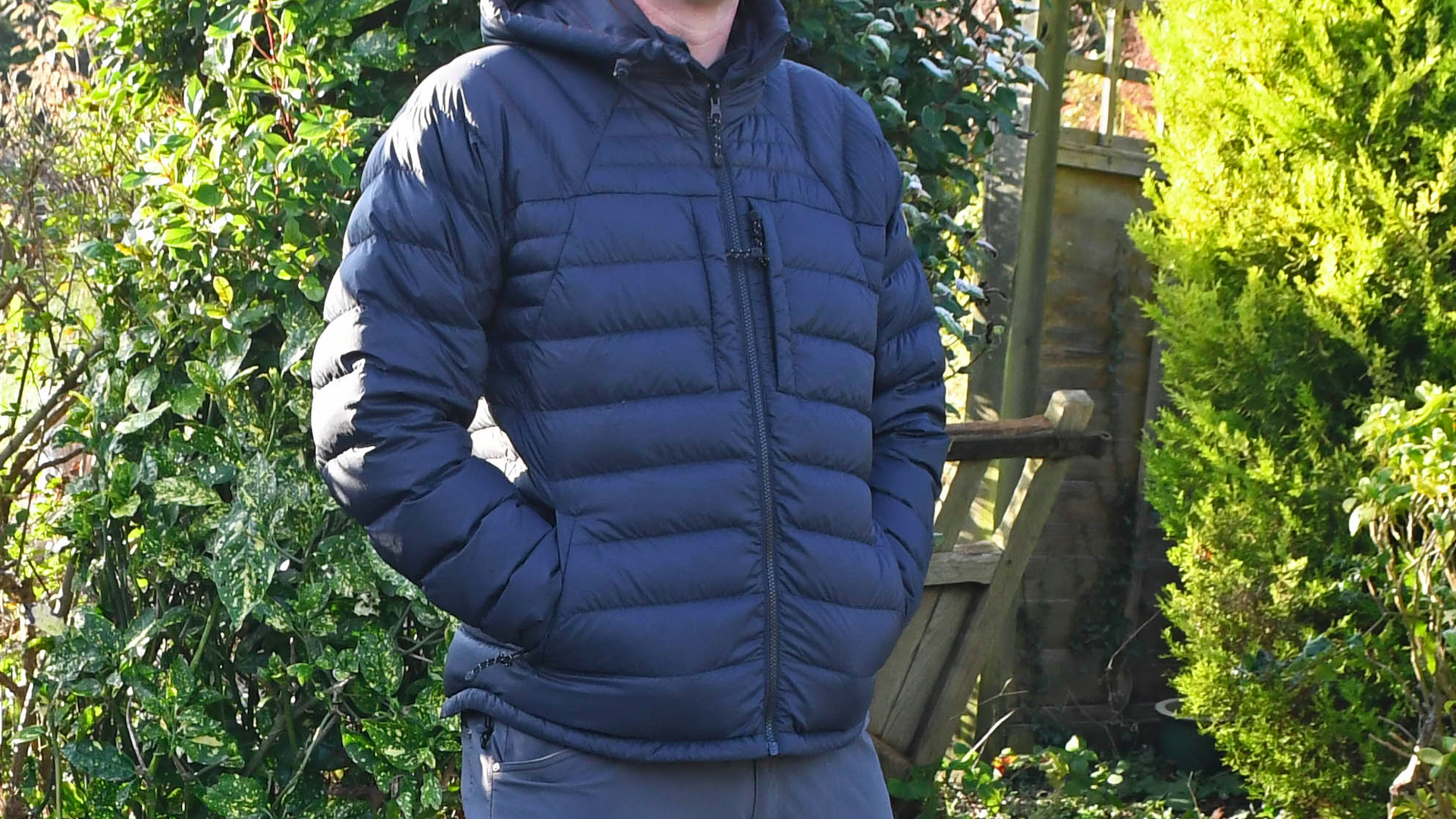
Specifications
Reasons to buy
Reasons to avoid
Although it offers excellent levels of thermal protection and warmth, the Rothera is designed to be worn across several seasons. It is not the most bulky puffer jacket we have tested. It is, however, unquestionably one of the best and most versatile. In dry weather it makes a superb and stylish outer layer, but while it will keep the wind at bay, like the vast majority of puffers it is not fully waterproof, so when the rain comes you will have to reluctantly cover it up with a lightweight waterproof shell layer. Whether worn as a mid or outer layer, however, the Rothera really delivers on some big promises.
Besides looking the absolute business, it has a highly protective, warm and easily adjustable hood, plus storm cuffs with in-built thumb loops, and lower hem that can be tightened around your hips. All of this combines to keep drafts out and ensures the coat stays where it should be, if and when you slide an outer layer over the top, or whilst wearing a backpack. You also get an array of zippered pockets both on the inside and out.
There is no getting away from the fact that this is a high-end piece of apparel, with a premium price tag and some glossy branding around renowned explorer and Antarctic survivalist Ernest Shackleton to match. The care and attention that has gone into the design and production of this coat, the materials used (including ethically sourced down and recycled nylon) and the performance levels it offers are all absolutely excellent, but it is a major investment.
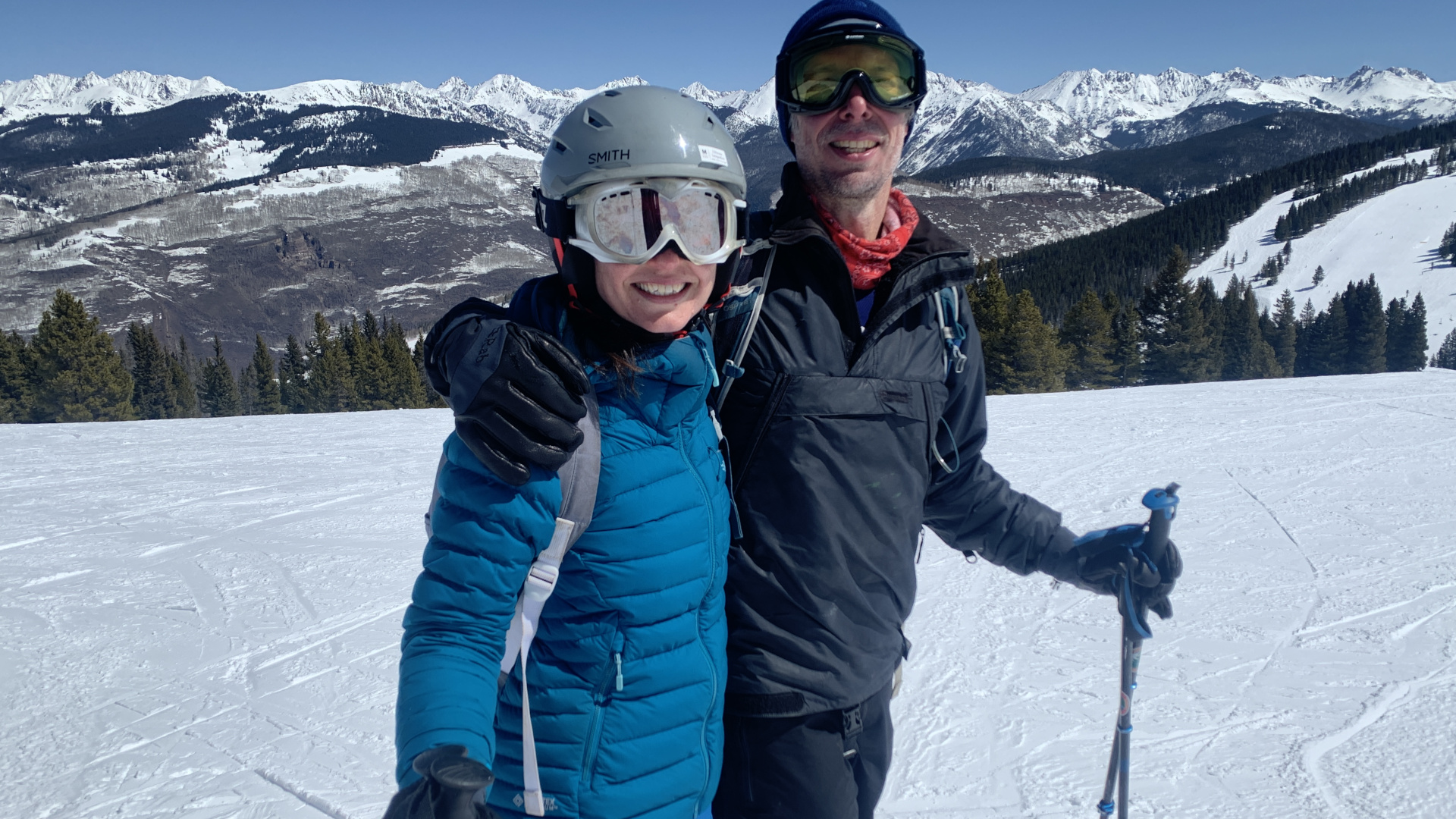
Specifications
Reasons to buy
Reasons to avoid
Typically, the main argument against down for outdoor adventures is that it doesn’t insulate when wet, but Rab has eliminated that issue by using a water resistant and windproof Gore-Tex Infinium outer so you can still wear this on damp days and stay cozy. This down jacket is filled with 700FP down making it great for adventures as cold as 32F/0C and if you are hiking in it and getting sweaty, it’s breathable too. It’s also ideal for when you stop moving and cool down, hanging out at camp, on belay or even around town when the sun dips down.
The draw cord hood stays up on gusty days with a soft chin guard to protect your skin when it’s fully zipped, while elasticated cuffs and a draw cord drop hem seal out cold drafts. Its stylish, non-bulky cut will please anyone who wants to wear it around town, but there’s plenty of room to move in it too. Rab’s commitment to sustainability shines through with the use of recycled down and if you want to hop on a plane with it, it packs down fairly small into the stuff sack provided. Competitively priced compared to other down jackets we’ve tested, we can’t find anything not to like about this jacket and think you’ll find use for it in every season.
Read our full Rab Infinity Microlight Down Jacket review
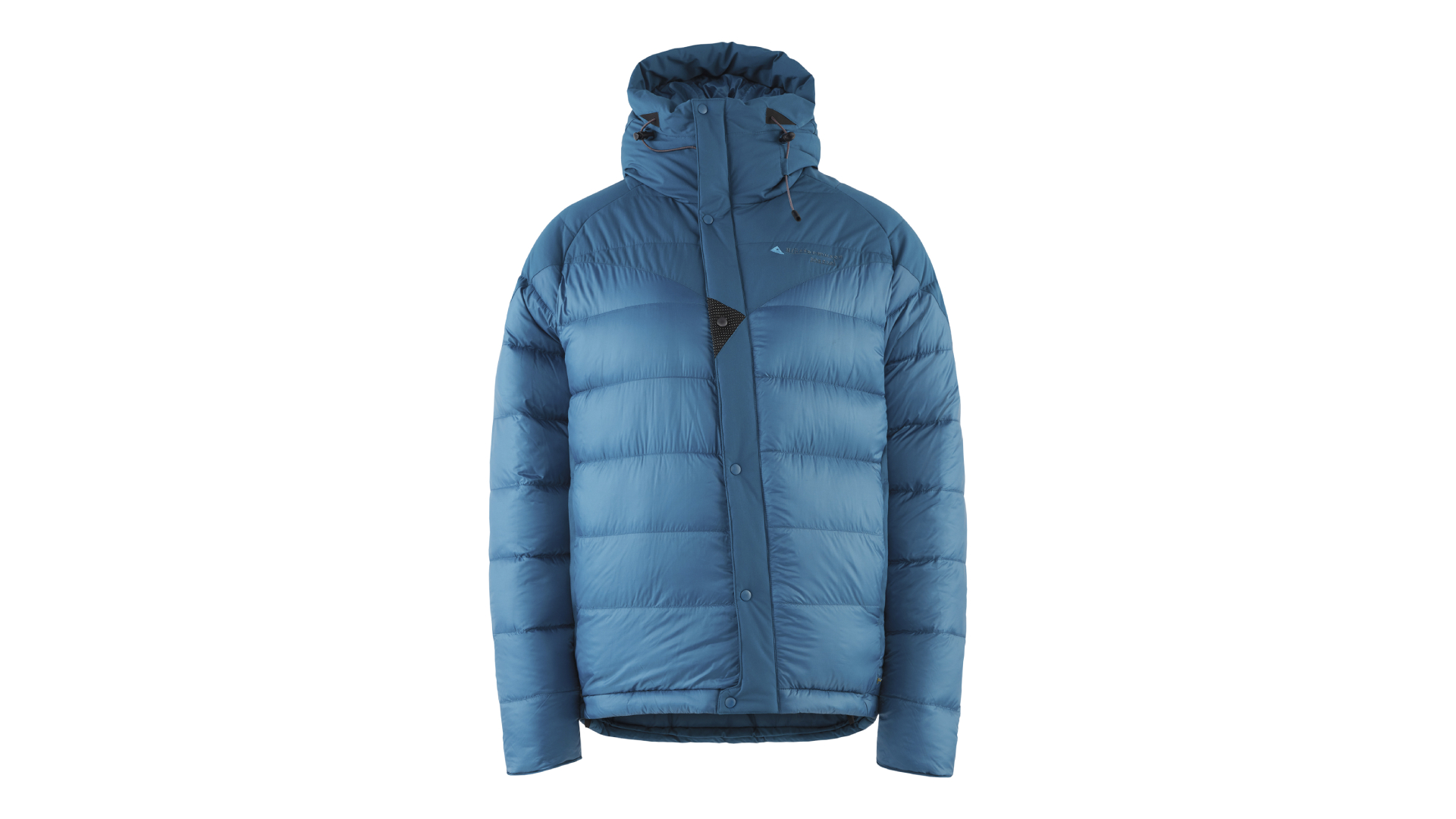
Specifications
Reasons to buy
Reasons to avoid
The Bore 2.0 is a real beast of a jacket, designed for hunkering down in winter weather or to throw on during stop-start activities at high elevations. That makes it ideally suited to climbing and mountaineering, and it works well as a belay jacket for alpine routes. The premium 800+ goose-down fill offers superb warmth for weight and good compressibility (it packs into its own pocket), while the box-wall baffle construction minimises cold spots.
To counteract down’s notoriously poor performance in damp weather, the Bore 2.0 has synthetic Primaloft filled reinforcements over the shoulders and arms that make it more resistant to moisture than most of its rivals – though it’s worth noting that the down fill itself is not hydrophobically treated. Klattermusen are also known for their eco-friendly approach to kit design, and this jacket is no exception. The down fill is bluesign approved and certified by the Responsible Down Standard, while the face fabric is made from 100% recycled polyamide, with a fluorocarbon-free durable water-repellent finish.
Read our full Klättermusen Bore 2.0 down jacket review
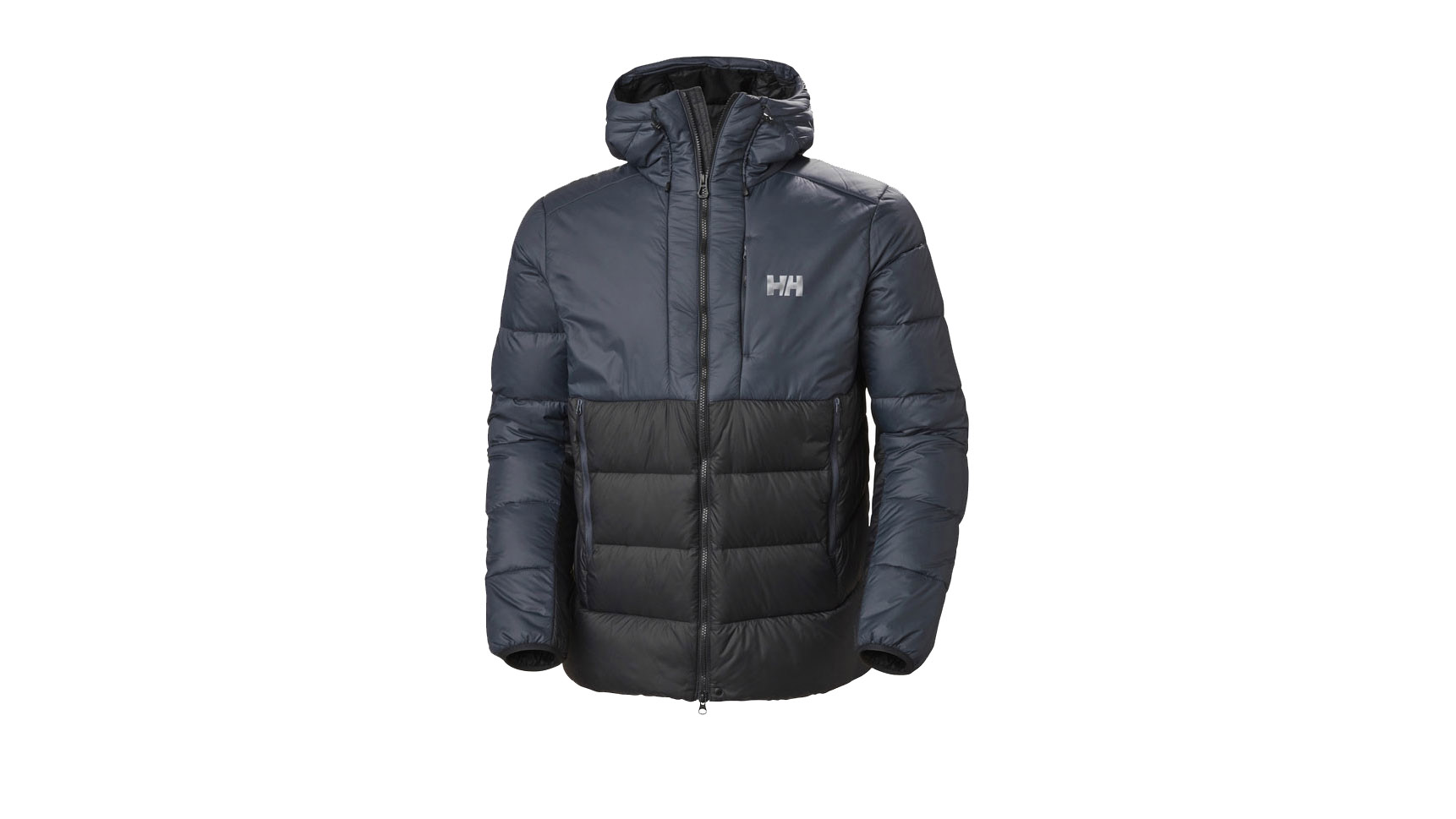
Specifications
Reasons to buy
Reasons to avoid
Designed for hiking, camping and other non-technical winter adventures, this super-soft and cozy puffer jacket combines 700FP down with synthetic Primaloft fill to improve performance in damp conditions. This is a stylish but functional-looking down puffy, with a sculpted fit that still allows plenty of room for layers. The midi baffles allow for good mobility and give a fairly trim silhouette, whilst still providing plenty of space for the 700 fill power down to loft, delivering welcome warmth.
The jacket is intelligently constructed for damp conditions too. Though the down fill itself has no hydrophobic treatment to improve resistance to moisture, the fill is zoned, so that areas such as the hood, shoulders, chest panel, armpits and sleeve ends all use Primaloft Silver synthetic fill, in a 133gsm weight. These are all areas that are prone to getting damp, ensuring continued insulating performance in poor conditions.
It’s well-specced when it comes to features. The well-designed, close-fitting hood has three-point adjustment to ensure a close, snug fit. It’s well-insulated with that Primaloft fill and the chin zips up almost to the nose for excellent face protection. Admittedly, the low-profile hood design is not helmet-compatible, but then this is an all-rounder of a jacket, not a dedicated climbing/mountaineering piece for technical use.
Read our full Helly Hansen Verglas Glacier Down Jacket review
Most versatile down jacket
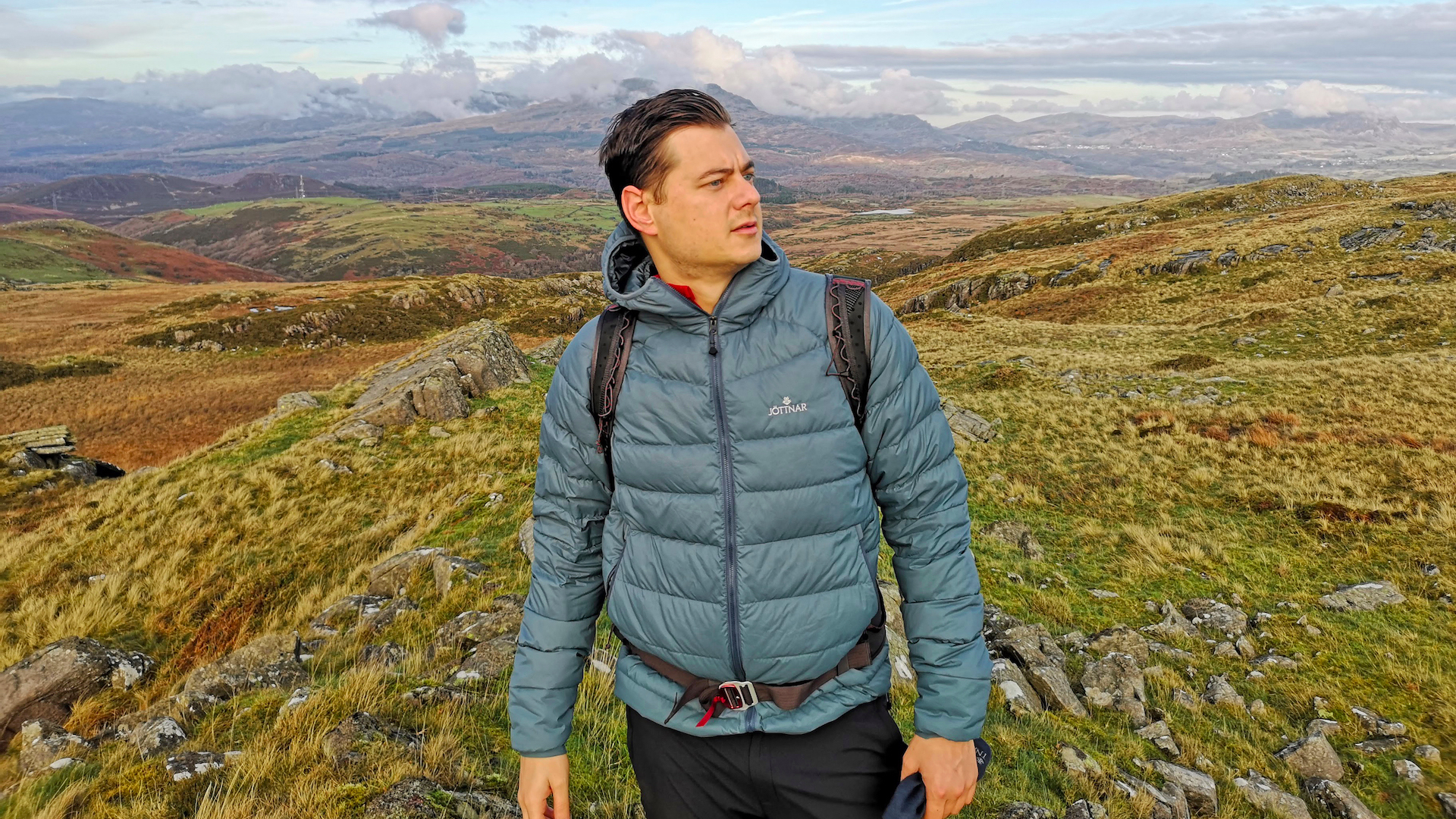
Specifications
Reasons to buy
Reasons to avoid
The Thorne is a 750FP down jacket with a 30D ripstop shell that offers warmth and durability while weighing under 500g. It’s ideally suited to hard use, such as cold-weather hiking and trekking or extended backpacking trips. It also offers superior performance in damp conditions compared to most rivals, thanks to its moisture-resistant hydrophobic down fill and zoned panels of synthetic insulation in the shoulders, hood, cuffs and underarms. In terms of overall fit and comfort, this is one of the nicest puffers we’ve worn, thanks to clever articulated patterning and a silky soft lining. Features work well for general outdoor use, with a head-hugging hood, stretch cuffs, a scooped rear tail and two snug handwarmer pockets.
Read our full Jöttnar Thorne Jacket review
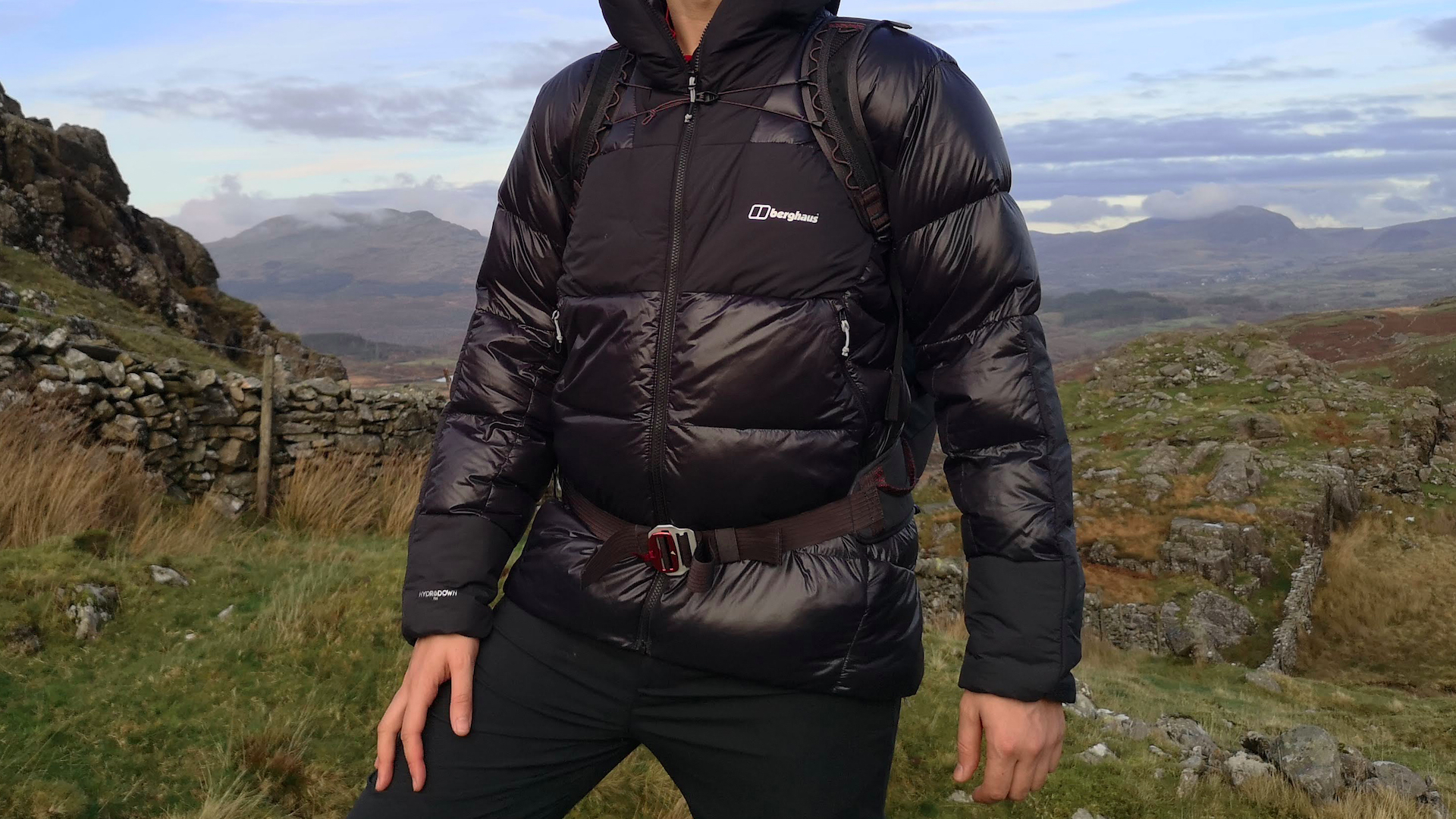
Specifications
Reasons to buy
Reasons to avoid
This chunky down jacket features 700 fill power hydrophobic duck down, combined with zoned panels of synthetic fill arranged in a clever body-mapped construction. It also incorporates an innovative heat trapping lining, designed to reflect the wearer’s own body heat back to them. From a style perspective, the jacket’s chunky, oversized baffles are bang on trend, and its contrasting matte/shiny fabrics are also very much in vogue right now.
But in terms of performance, the high fill weight ensures it’s also extremely warm, even in temperatures that dip below freezing. Thanks to the zoned synthetic panels, moisture resistant Hydrodown fill and water-repellent face fabrics, it’s also better equipped to withstand damp conditions compared to most down puffers. This adds both practicality and versatility for technical use in the mountains, where you’ll also appreciate the fleecy handwarmer pockets, the cosy hood and the draught-excluding double baffle either side of the main zip.
Read our full Berghaus Urban Arkos Reflect Down Jacket review
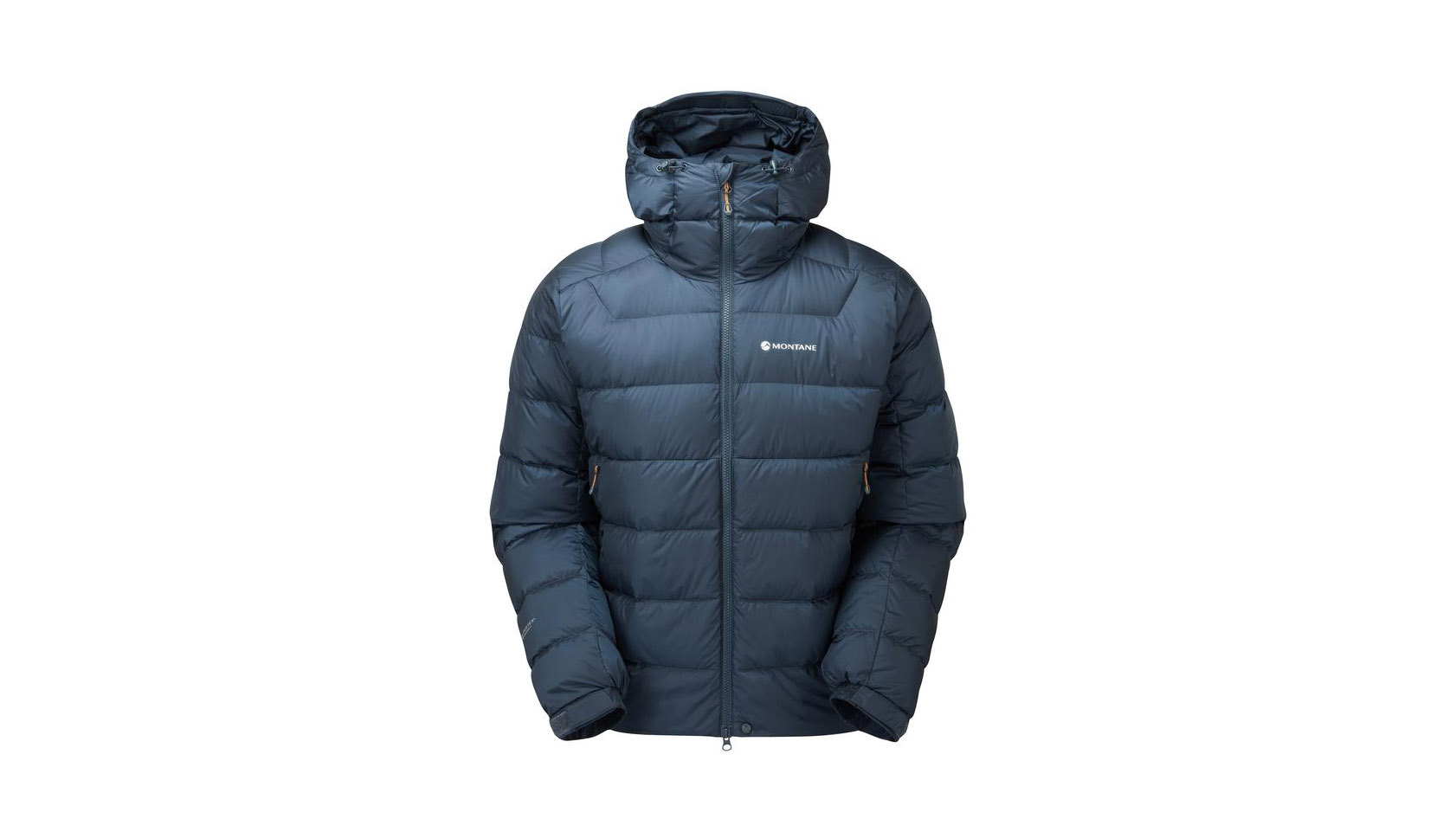
Specifications
Reasons to buy
Reasons to avoid
Boasting superior wet-weather performance compared to most delicate down jackets, thanks to a water-resistant shell and hydrophobic fill, this chunky puffer is well-equipped to deal with wet and cold winters.
Stuffed with 650+ FP down (certified by the Responsible Down Standard but at the upper end of what we’d class as ‘entry-level’ in terms of fill power) the Janhukot tips the scales at 800g, so it’s no lightweight. It’s also pretty chunky, with large baffles and a fairly boxy silhouette. You’d struggle to wear it under a shell, so this is certainly not intended to work as a midlayer. Instead, it’s designed as a standalone barrier against the cold. And in that regard, it does a very good job. Indeed, its sheer heft makes it feel extremely cosy.
The main zip is fitted with a chunky zip pull and backed with a full-length baffle. It is a two-way design, so you can open the jacket from the bottom if required (ideal for wearing with a climbing harness or if you need to access layers underneath the jacket quickly).
The face fabric of the jacket is an extremely tough 40 Denier Pertex Quantum Pro micro ripstop nylon, with a highly water-resistant finish. It’s worth noting here that the down fill inside the jacket is also water-repellent, thanks to a PFC-free treatment. All of which means that this jacket is far better equipped to withstand damp conditions than most down puffers.
Read our full Montane Janhukot down jacket review
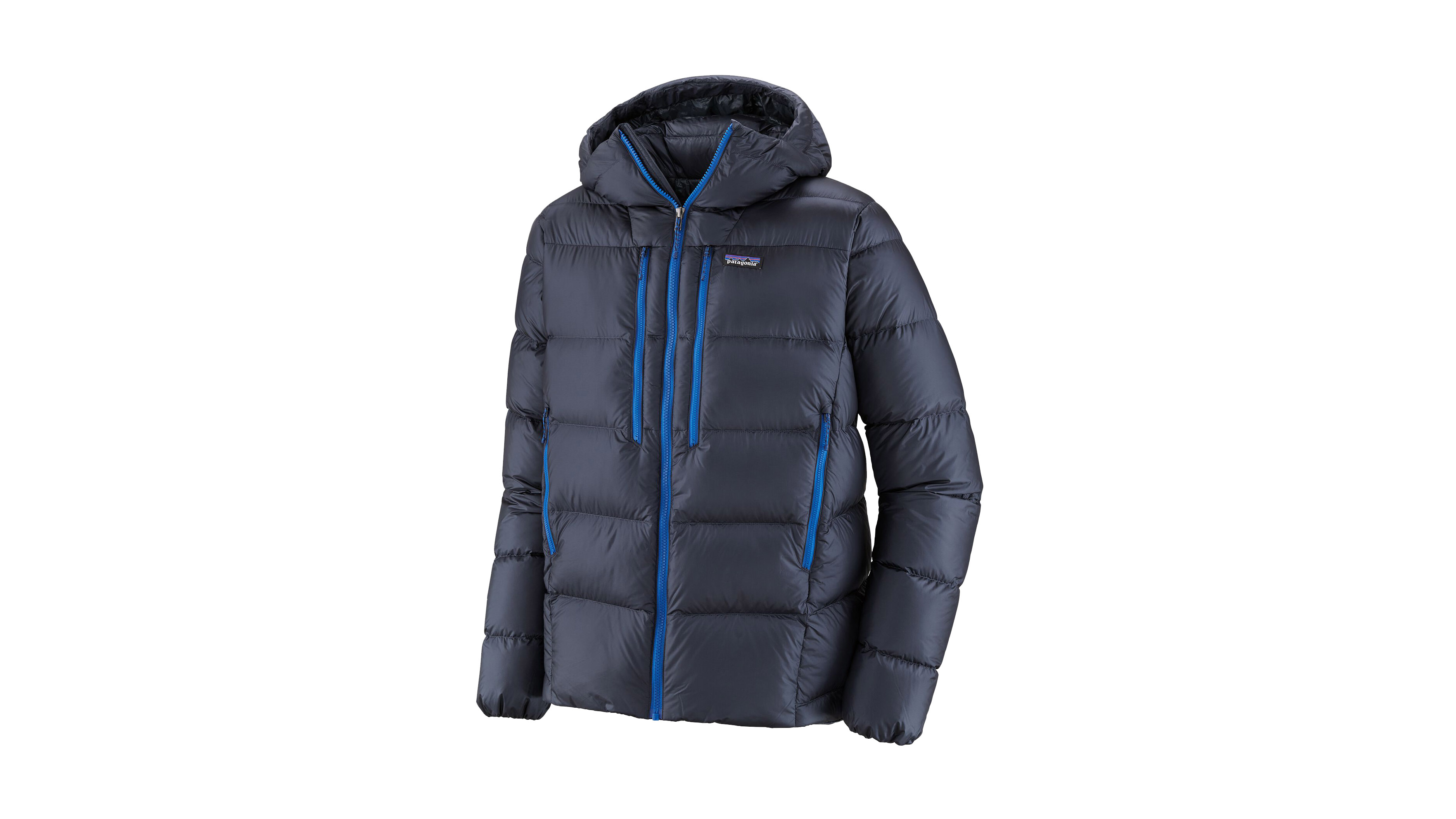
Specifications
Reasons to buy
Reasons to avoid
Designed for technical mountain use, this is a premium 800 fill power down jacket for seriously cold weather conditions. For its class, it’s also lighter and more packable than most rivals – but its Achilles heel is relatively poor performance in damp conditions.
The Fitz Roy’s boxy silhouette promises plenty of warmth, but clearly shows this is a jacket designed as a standalone outer layer, built for exposed belays and technical mountain use. It is certainly no lightweight, micro-baffled layering piece, and shouldn’t be compared with those styles of puffers. Nor is it designed to be worn during high-output activity – it’s a jacket for hunkering down in when static.
It’s not quite expedition-level warm, as it uses a stitch-through construction rather than box-wall baffling, but the premium 800 fill power down still delivers exceptional warmth for its weight. This is a jacket primarily intended for Alpine-style climbing and mountaineering, but one that works well for any extremely cold day above the snowline.
The jacket also employs a 100% recycled ripstop nylon Pertex Quantum shell, with a DWR finish – combining durability and toughness with commendable eco-conscious credentials, something we’ve come to expect from Patagonia.
Read our full Patagonia Fitz Roy Hoody review
Best natural down jackets
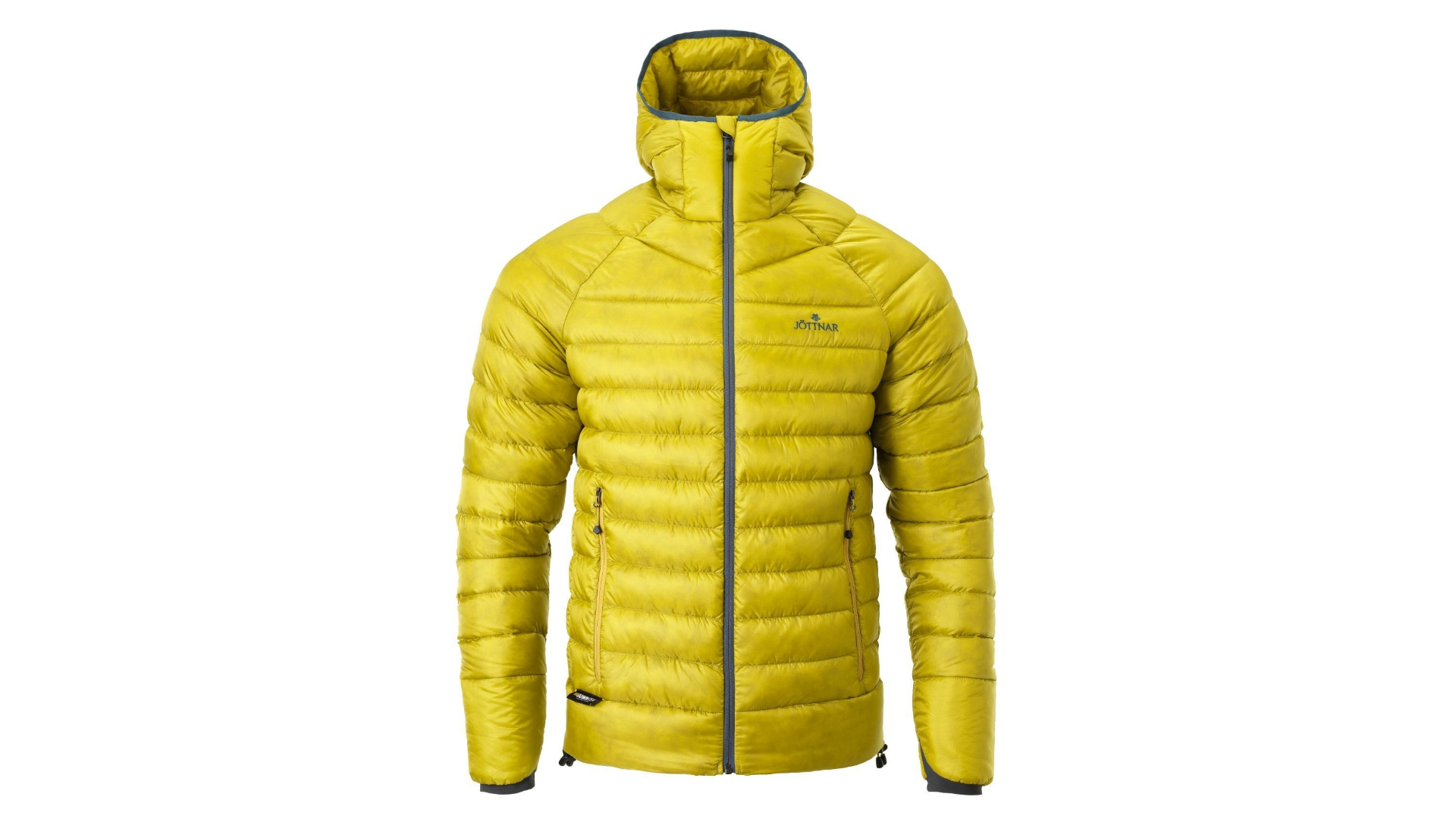
Specifications
Reasons to buy
Reasons to avoid
Despite the Nordic name, Jöttnar is a British brand that has built a reputation for turning out some of the finest technical apparel in the business, epitomised by the handsome Fenrir. This midweight hooded down jacket uses premium materials, including 850-fill-power water-repellent goose down and a 30-denier ripstop nylon face fabric. It also employs synthetic insulation in moisture-prone areas like the neck, hem and cuffs, which when put together with that hydrophobic down fill, makes this a more versatile and weather-resistant down jacket than most. The Fenrir also offers impressive warmth for weight, reflecting its intended use as a throw-on layer for hiking, hillwalking and general mountain pursuits.
Despite its light and packable nature, it doesn’t sacrifice features. So, you get a full-length zip with an inner baffle, plus twin zipped hand pockets and an internal zipped security pocket. There are anti-snag drawcords at the hem, stretch cuffs that fit easily over gloves and an elastic-bound hood, with a rear cinch cord. The fit is also spot on, and this jacket really comes into its own as an extra layer for winter summit trips or chilly wild camps.
Read our full Jöttnar Fenrir down jacket review
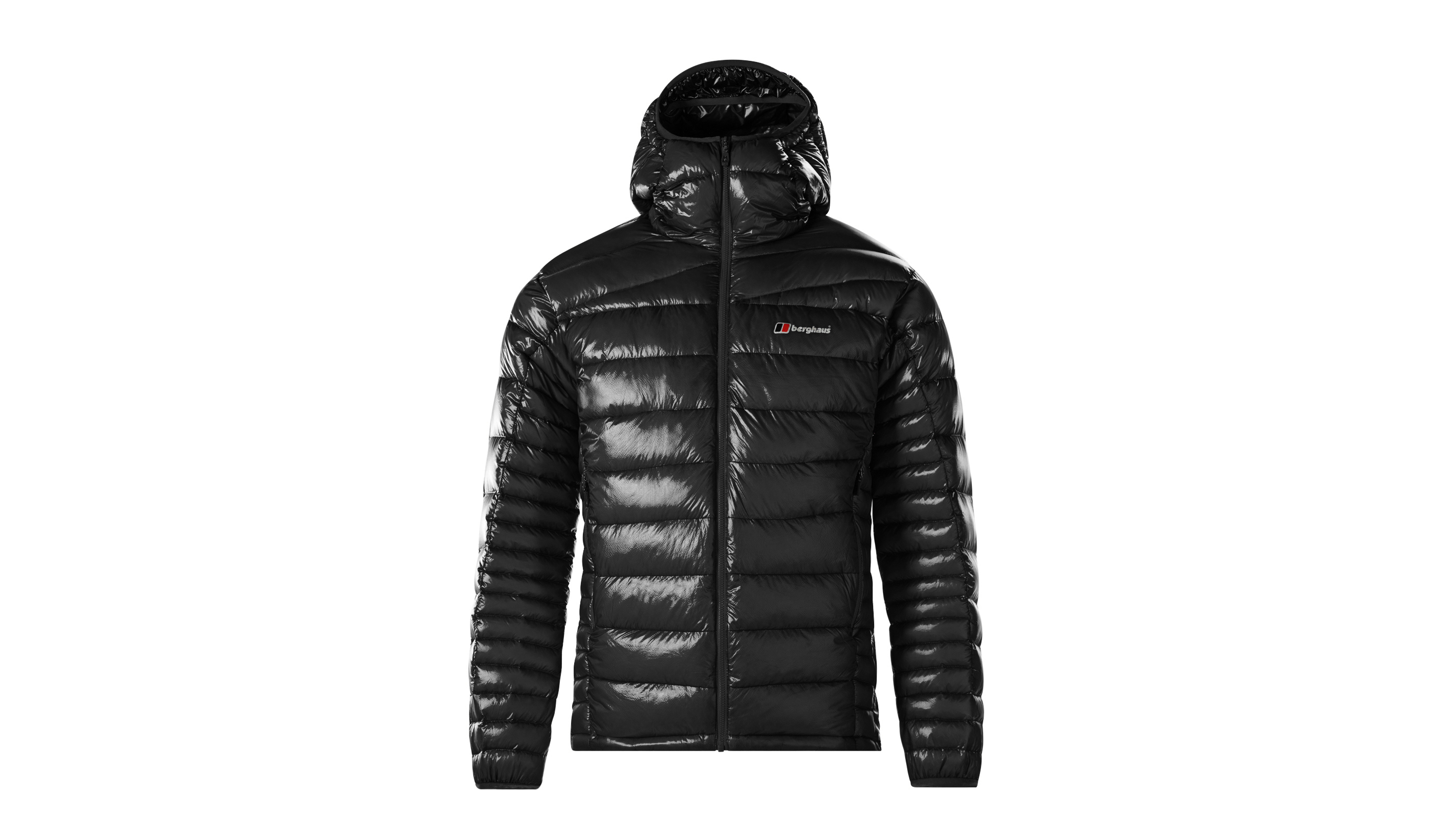
Specifications
Reasons to buy
Reasons to avoid
The Ramche Micro is the little brother to Berghaus’ expedition-ready Ramche 2.0 down jacket. However, it still has serious technical pedigree and is a jacket that will appeal to climbers for its streamlined fit, generous coverage, voluminous helmet-compatible hood and highly impressive warmth for weight. The secret to the Ramche Micro’s lightweight warmth is its unique blend of advanced fabric technology, premium fill and clever patterning. It uses an extremely light ripstop nylon face fabric and 850-fill-power hydrophobic goose down, powered by Nikwax.
The design is body-mapped, placing more fill at the core for enhanced warmth, and incorporates an internal Reflect mesh, which according to Berghaus can increase overall warmth by up to 10 per cent. That gives the Ramche Micro the ability to deliver a welcome boost of warmth in even the chilliest and most exposed locations.
Read our full Berghaus Ramche Micro Reflect down jacket review
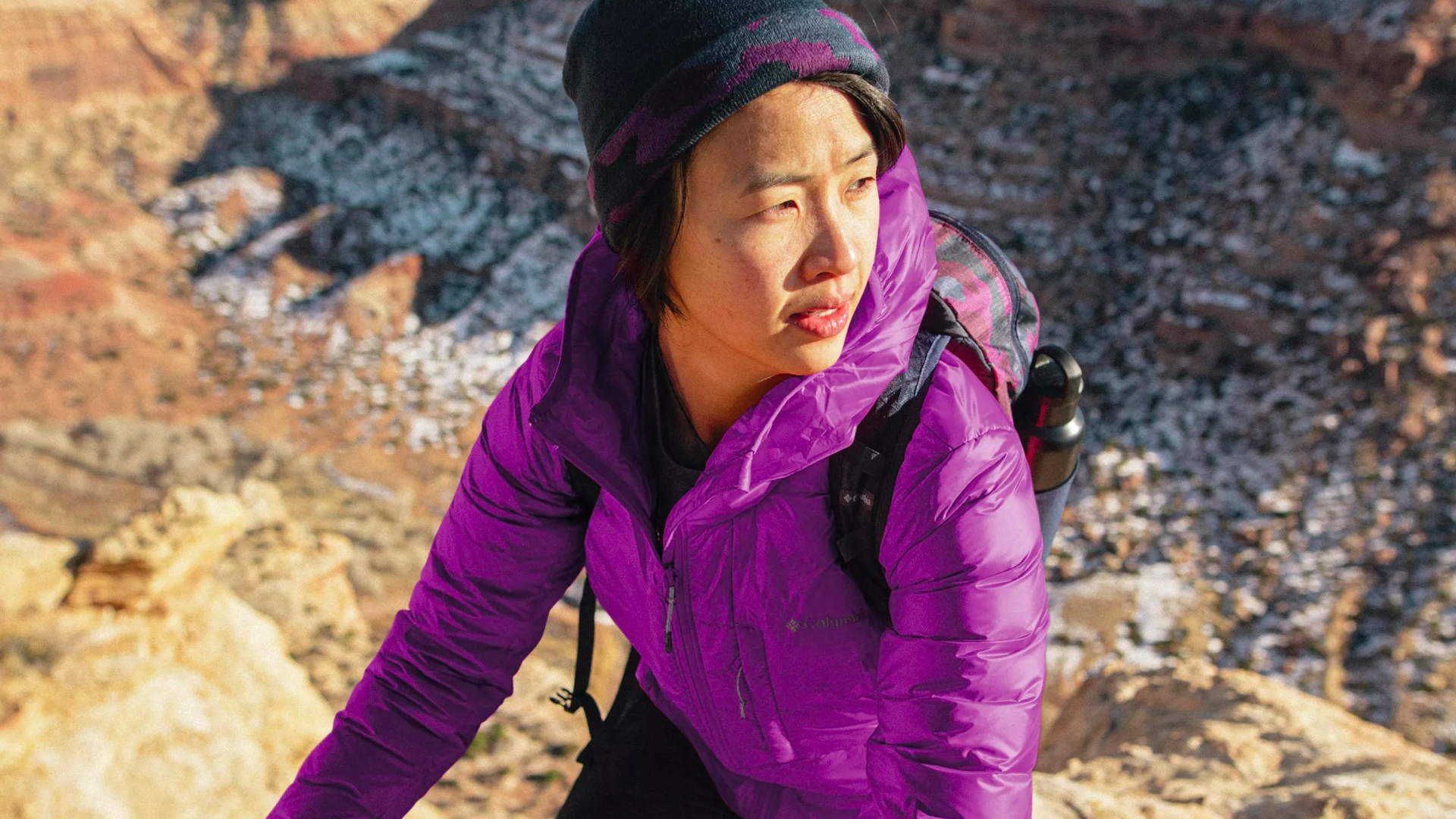
Specifications
Reasons to buy
Reasons to avoid
When it comes to warmth for weight, there’s no faulting this jacket’s premium 800 fill power down. We’re also fans of the innovative double wall construction, which blocks wind and locks in heat superbly. But other features and the boxy fit mean that this jacket is a mixed bag overall.
US brand Columbia isn’t a company to turn out the same old stuff season after season. They’ve produced some of the most interesting and unusual outdoor kit we’ve encountered in recent years, across a number of categories – their OutDry waterproof jackets being a case in point.
Now they’ve turned their attention to insulated layers, and the Infinity Summit Double Wall Down Jacket is just as innovative. The inner face of the jacket employs the latest iteration of Columbia’s Omni-Heat technology – a thermal reflective layer comprised of shiny metallic elements. In this jacket, it’s dubbed Omni-Heat Infinity, consisting of a new pattern of gold dots for even better heat retention.
More remarkable, however, is the face fabric of the jacket, which Columbia calls ‘double wall’ construction. At first glance, this looks like a standard baffled puffer, but pull the fabric taut and you can see that there are no stitch lines at all. They’re hidden behind an additional layer of face fabric, designed to block wind and eliminate cold spots by trapping even more warm air inside the jacket. The fill itself is premium 800FP RDS-certified goose down, while the shell and lining are both made from nylon ripstop fabric.
Read our full Columbia Infinity Summit Double Wall Down Hooded Jacket review
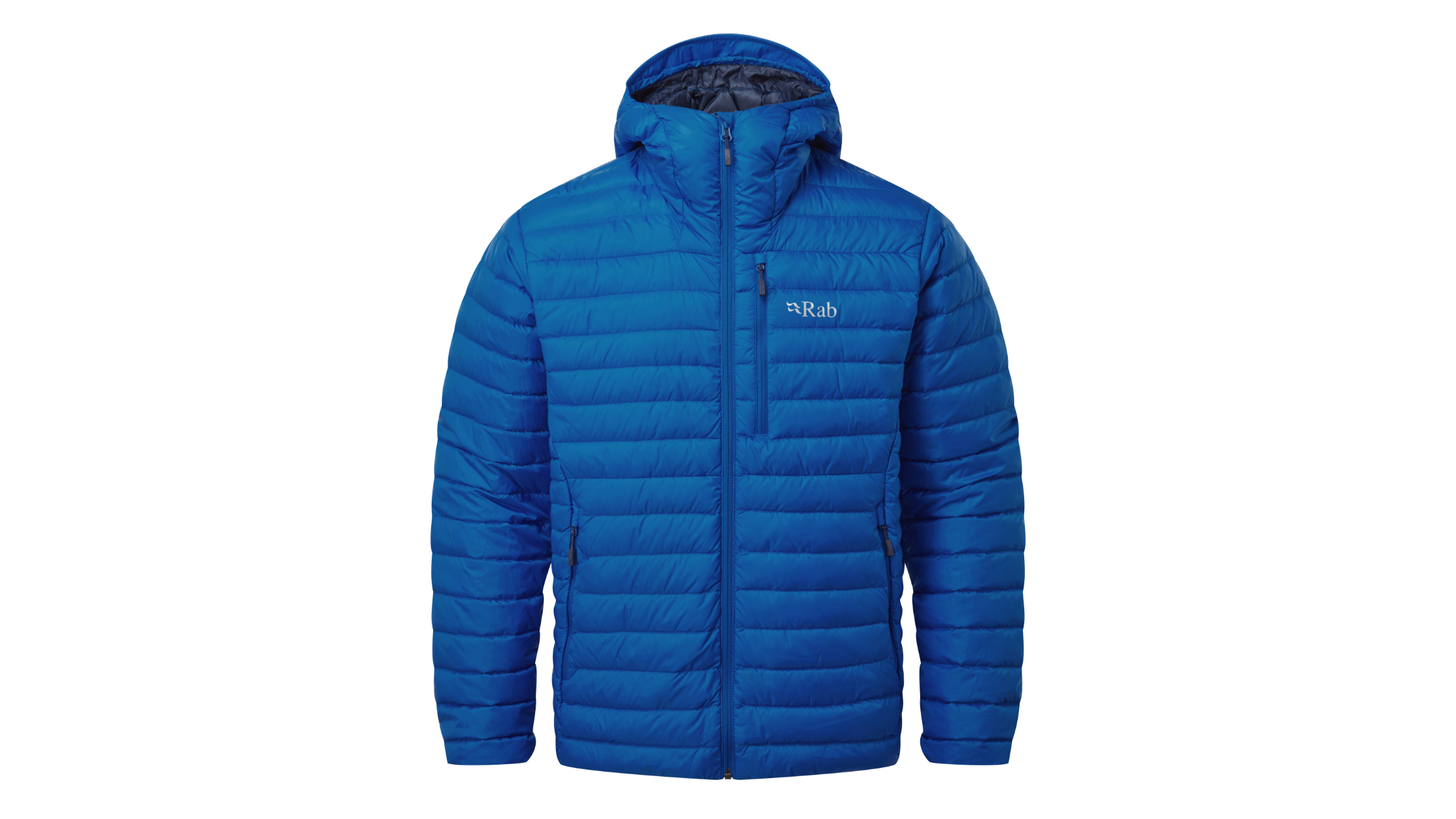
Specifications
Reasons to buy
Reasons to avoid
As well as being one of the best down jackets you can buy, Rab’s Microlight jacket is one of the most popular around, worn and loved by outdoors types from dirtbag climbers to weekend hill-baggers. Increasingly, it has made the crossover into everyday wear too, and nowadays you’re as likely to see the Rab Microlight being worn by supermarket moms as summit mountaineers. There's a reason for its popularity: it’s a warm, effective and versatile layer.
The current version, the Microlight Alpine, also has impressive eco credentials. It boasts a fully recycled 30-denier ripstop nylon shell and a recycled lining, plus GRS-certified, 700-fill-power P.U.R.E recycled hydrophobic down. Additional features include three zipped, sensibly placed pockets, a handy stuff sack and an insulated hood with a stiffened peak. In fact, it’s mightily impressive that Rab have managed to create a single piece that adapts so well to so many different environments. It’s even a decent performer in classic damp British weather, especially compared to many other down jackets, thanks to its DWR-treated face fabric and a moisture-resistant fill.
Read our full Rab Microlight Alpine down jacket review
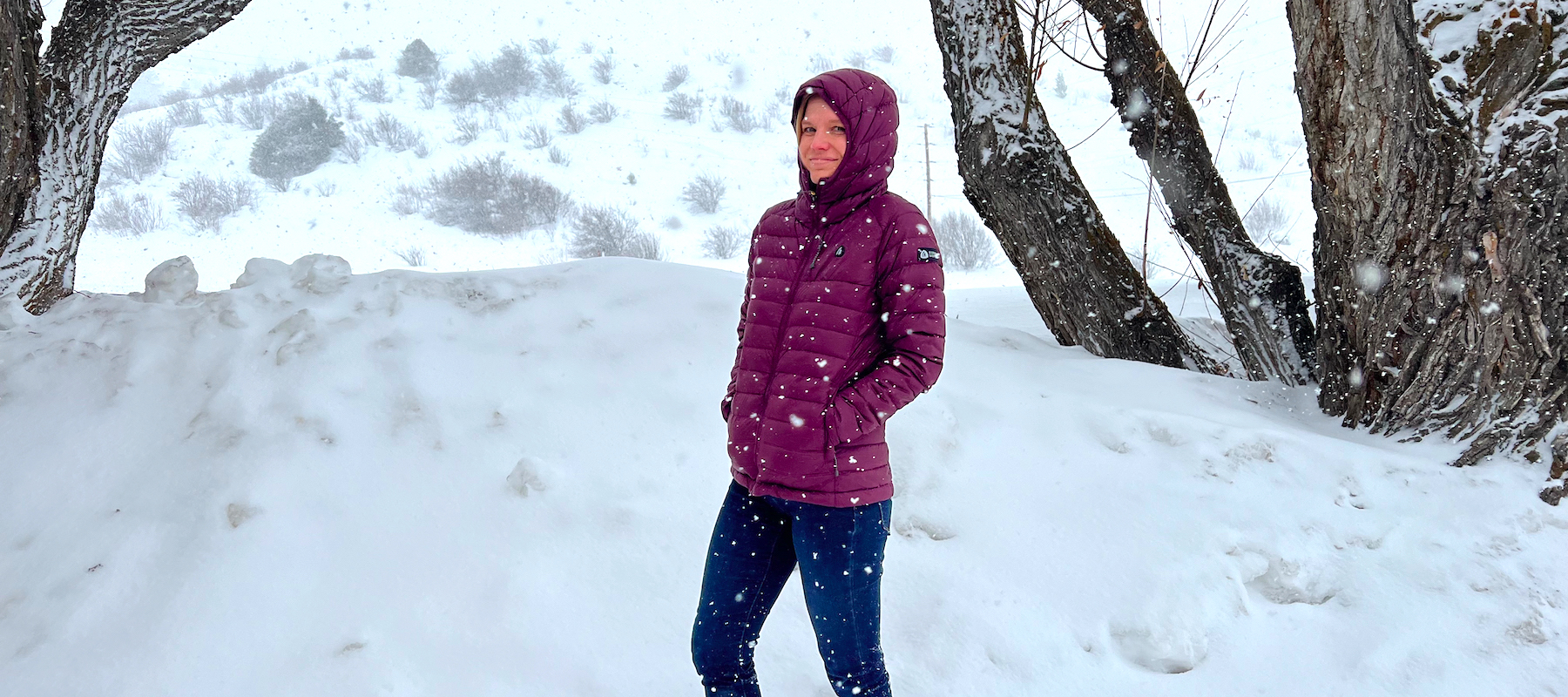
Specifications
Reasons to buy
Reasons to avoid
Everyone needs that everyday down jacket, and all the better if it’s made more sustainably while also keeping you warm in the elements. The Sierra Designs Whitney Down Hoodie is now made with RDS (Responsibly Down Source) certified 800-fill DriDown. The down is treated with a hydrophobic finish, so the natural insulating properties of the down are not compromised if the jacket gets wet. We have tested this jacket on a number of to-and-from occasions this winter, including in some larger mountain snowstorms recently. It proved warm, even as the temperature dropped and the snow continued to fall. The jacket’s shell has a DWR finish as well, so it was repelling moisture from the outside-in and we didn’t get wet or cold at all.
Overall, the Sierra Designs Whitney Down Hoodie can be a go-to down jacket because it stands up to everyday cold conditions and even repels moisture when the snow starts to fall.
Read our full Sierra Designs Whitney Down Hoodie review
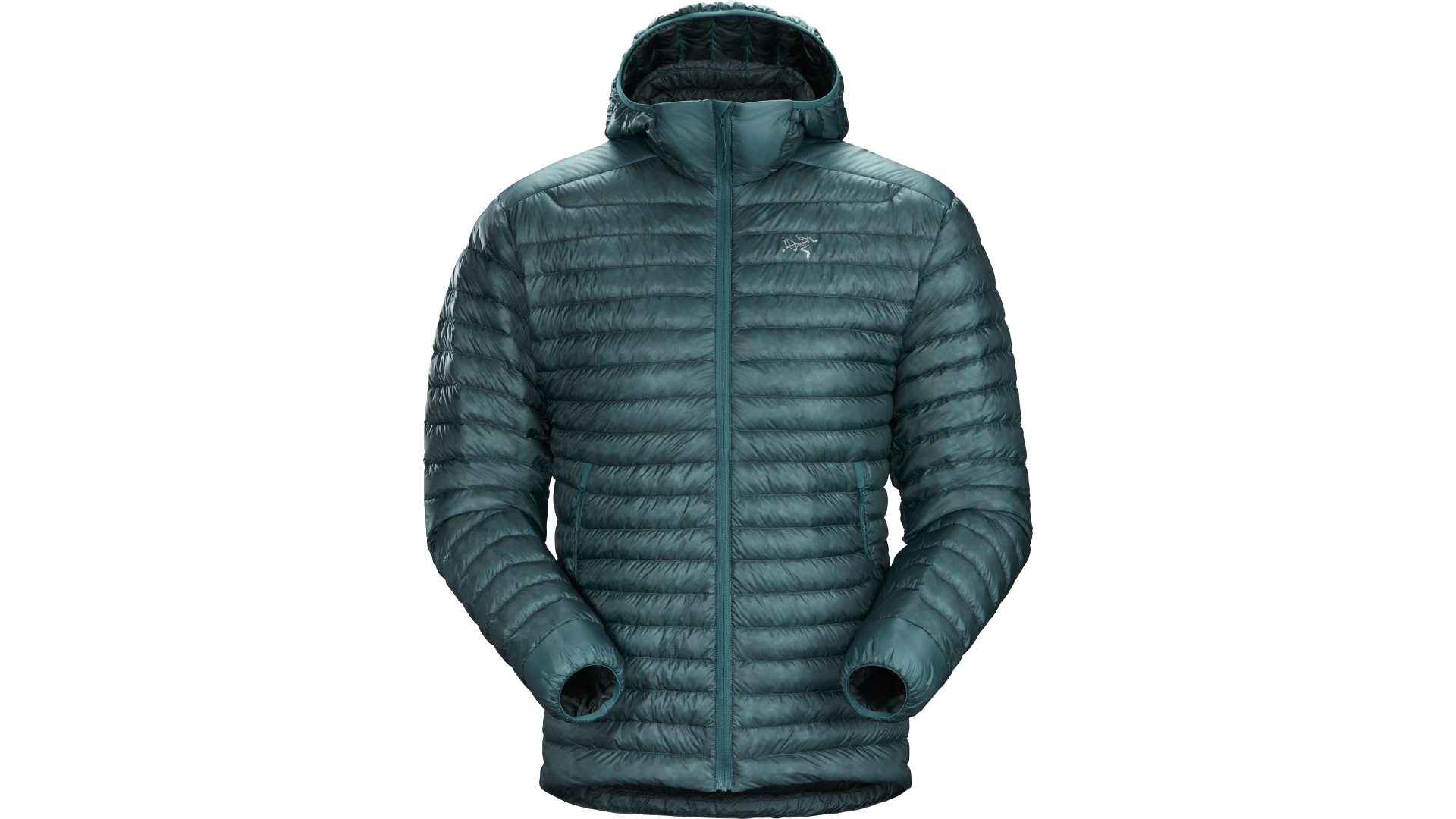
Specifications
Reasons to buy
Reasons to avoid
The Cerium SL Hoody is the lightest and most packable down layer in the Arc’teryx range, and its commitment to functional minimalism is absolute. The result is a piece that weighs under 250g – the same as most ultralight half-zip down sweaters and pullovers – yet delivers exceptional warmth for weight while including a full zip, two zipped hand pockets plus an adjustable hem and hood, all features that you’d only tend to find on jackets weighing at least half as much again. Those additions give the Cerium SL considerably more versatility, making it suitable for use as an outer layer in milder and calmer weather as well as a superb insulating midlayer when worn beneath a shell. It compresses to such a compact size that you’ll hardly notice its weight or bulk in a pack, yet when used as a standalone for rest breaks, evenings at camp, or even emergency bivvies it still manages to deliver a noticeable and very welcome boost of warmth.
Read our full Arc’teryx Cerium SL Hoody down jacket review
The best down alternative jacket
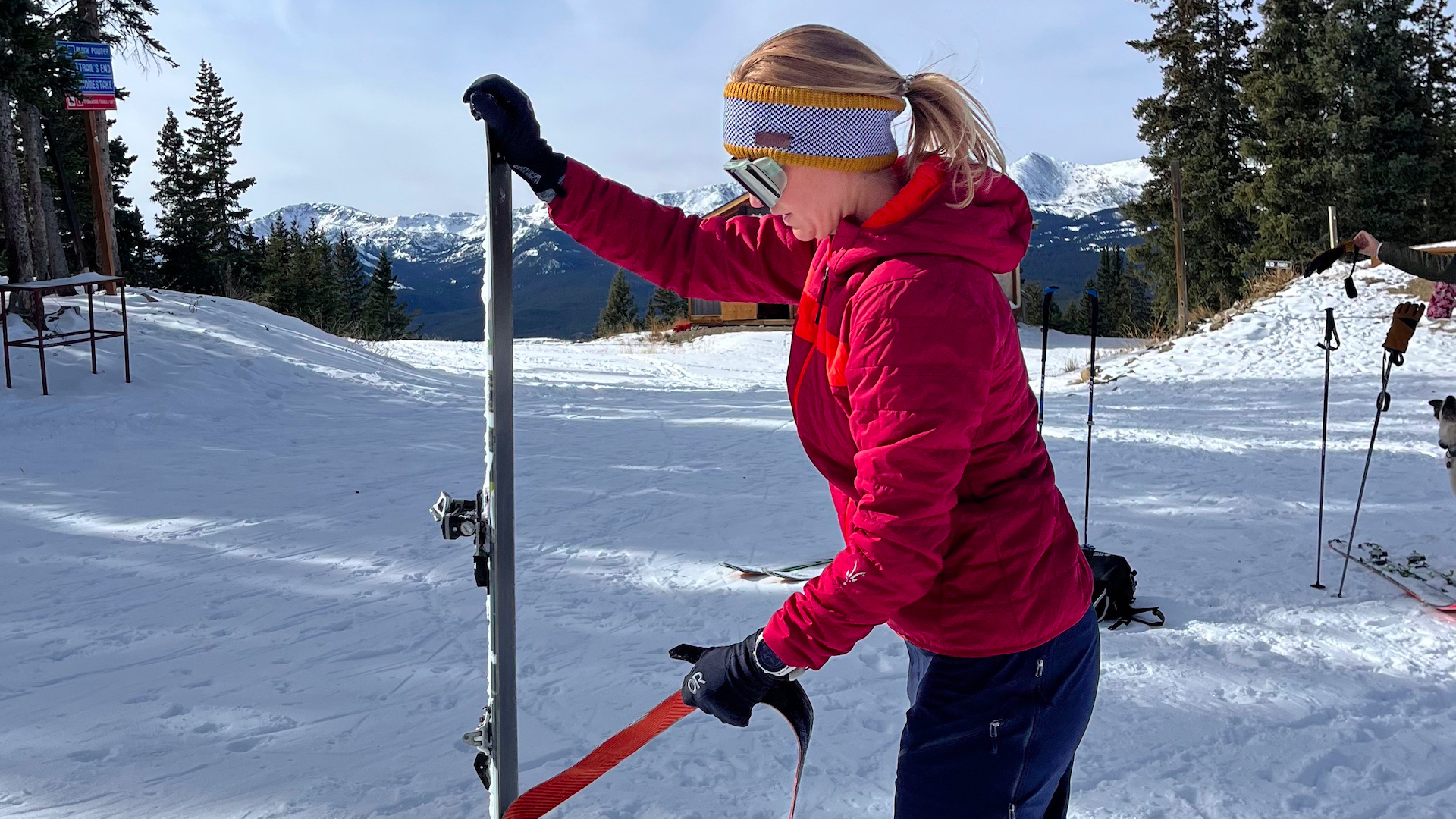
Specifications
Reasons to buy
Reasons to avoid
When you can only bring one jacket on an outdoor or travel adventure, the Ibex Wool Aire Hoodie a great choice if the temperatures and elements aren’t going to be extreme. This jacket has a higher price point, which makes it an investment, but the quality and performance of the Ibex Wool Aire Hoodie is undeniable.
The wool insulation in the Ibex Wool Aire Hoodie is lightweight and does an amazing job of keep heat in, but it’s also breathable when you do start to move more or when the sun comes out. Once the temps drop below 7°C / 20°F or so, then it’s ideal as a midlayer under another jacket. It’s versatility makes it a piece that can be used from outdoor activities that range from hiking, backpacking and camping to skiing, cold-weather running and shoulder season mountain biking.
The Ibex Wool Aire Hoodie is made to move in, although it would be nice if it had soft wool panels under each arm for next-to-skin comfort if you were to wear it over a tank top alone. The elastic waist hem and wrist cuffs keep cold air out, while the lightweight wool insulation is breathable when you get moving and breaking a sweat. If the wind does pick up or precipitation starts, the scuba hood keeps your head covered while the jacket’s face fabric is both water-resistant and wind-resistant.
It’s easy to bring the Ibex Wool Aire Hoodie along on adventures because of how small it packs into its zippered internal chest pocket (the men’s version does the same, but from a zippered external chest pocket).
Read our full Ibex Aire Hoodie review
| Down jacket | List price | Weight | Style | Best use |
| Shackleton Rothera Jacket | £495 (UK) | 647g / 22.8oz | High performance down jacket | Year round adventures: hiking, winter walking, backpacking |
| Rab Infinity Microlight | $280 (US) / £240 (UK) | 452g / 15.9oz | High performance down jacket | Winter and shoulder seasons: winter hiking and backpacking |
| Klättermusen Bore 2.0 | $790 (US) / £650 (UK) | 800g/28oz | High performance goose down jacket | Extreme winter conditions: winter and alpine mountaineering, high altitude climbing, polar expeditions |
| Helly Hansen Verglas Glacier Jacket | $340 (US) / £260 (UK) | 561g / 1lb 3.8oz | High performance down jacket | Winter and shoulder seasons: winter hiking and backpacking |
| Jöttnar Thorne Jacket | $375 (US) / £285 (UK) | 540g / 1lb 3oz | High performance down jacket | Winter and shoulder seasons: winter hiking and backpacking |
| Berghaus Arkos Reflect Jacket | $325 (US) / £260 (UK) | 750g /1lb 10oz | High performance down jacket | Winter and shoulder seasons: winter hiking and backpacking |
| Montane Janhukot down jacket | $290 (US) / £220 (UK) | 800g / 28.2oz | High performance down jacket | Winter and shoulder seasons: hiking, backpacking, climbing, winter and alpine mountaineering |
| Patagonia Fitz Roy Hoody | $399 (US) / £380 (UK) | 485g / 17oz | High performance down jacekt | Winter and shoulder seasons: hiking, backpacking, climbing, winter and alpine mountaineering |
| Jöttnar Fenrir | $395 (US) / £295 (UK) / €335 (EU) | 390g/13.7oz | High performance goose down jacket | Winter and shoulder seasons: hiking, backpacking, climbing, winter and alpine mountaineering |
| Berghaus Ramche Mirco Reflect | £300 (UK) / €340 (EU) | 310g/10.9oz | High performance goose down jacket | Winter and shoulder seasons: hiking, backpacking, climbing, winter and alpine mountaineering |
| Columbia Infinity Summit Double Wall Down Hooded Jacket | $240 (US) / £225 (UK) | 510g / 18oz | High performance goose down jacket | Winter and shoulder seasons: hiking, backpacking, climbing, winter and alpine mountaineering |
| Rab Microlight Alpine | £195 (UK) / €230 (EU) | 466.5g / 16.4oz | High performance recycled, hydrophobic down jacket | Winter and shoulder seasons: hiking, backpacking, climbing winter and alpine mountaineering |
| Sierra Designs Whitney Down Hoodie | $189.95 (US) | 350g / 12.36oz | Down insulated jacket for everyday use | Winter and shoulder seasons: everyday use |
| Arc'teryx Cerium SL Hoody down jacket | £300 (UK) / $360 (US) / €340 (EU) | 215g / 7.6oz | Lightweight down jacket | Winter and shoulder seasons: everyday use |
| Ibex Wool Aire Hoodie | $285 (US) | 284g / 10oz | Merino insulated hoodie | hiking, backpacking and camping to skiing, cold-weather running and shoulder season mountain biking |
How to choose the right down jacket
As with almost all outdoor kit, the best down jacket for you will depend on a number of factors – not least, when and where you’ll be wearing it. In addition, though the primary function of a down jacket is to provide insulation – ie to keep you warm – this can be balanced with other factors such as weight, bulk, breathability and pack size.
As a rule of thumb, the bigger and heavier the jacket, the warmer it will be. But if you’ll be moving fast or tend to run hot, bear in mind that most insulated jackets will be too warm for active use, unless expressly designed to offer breathability. Jackets usually achieve this by employing a hybrid construction, blending air-permeable and wicking fabrics alongside lightweight fills for warmth.
We've got an in-depth guide explaining how to choose a down jacket or puffy jacket, but here's a breakdown of what you need to look out for
Fill
The fill or insulation contained within the jacket is what makes a classic puffer, well… ‘puffy’. This is what provides warmth. This fill can be comprised of natural goose or duck down, synthetic fills (usually polyester), other natural fibres like Merino wool, or a blend of these materials.
Down is the fine plumage that lies beneath the outer feathers of wildfowl like ducks and geese. It is nature’s best insulator, and in terms of warmth for weight, premium down is still superior to even the best man-made synthetic fills. Down is also highly compressible, soft and comfortable. It is, however, expensive to source.
In terms of insulating performance, some synthetic fills are getting closer to matching natural down. The main advantages of synthetic insulation are that it is more resistant to moisture than down, retaining its warmth even when wet. It is also fast drying, easy to care for and relatively cheap.
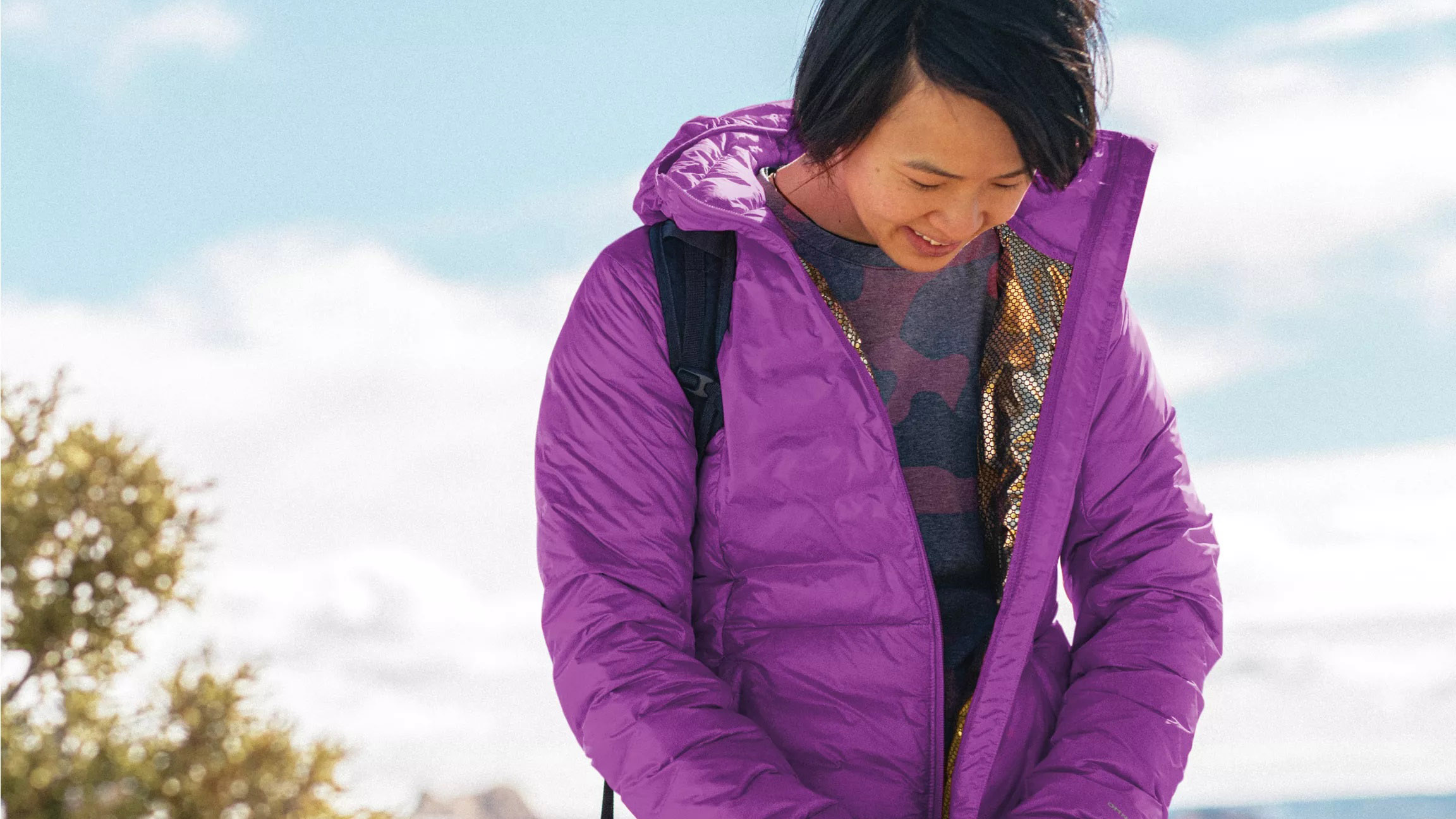
Design
While the fill weight and type of insulation used is what primarily dictates the warmth of a down jacket, factors like construction and overall design also have an impact.
Natural down is made up of tiny individual clusters of fibres. This means that in order to provide effective insulation, they need to be contained in baffles, which are stitched panels into which the fill is blown. The shape, size and arrangement of the baffles all affect the capacity of the fill to loft or trap air, which is how a puffer jacket provides warmth. In addition, how they are constructed is important. The warmest expedition-style down jackets use box-wall construction. Basically, each baffle is a self-contained brick shape. Lighter jackets employ stitch-through construction, where each baffle is a sort of fabric sandwich, trapping the down between stitched seams. This is an easier method of manufacture that saves fabric and therefore weight, but it can also reduce loft and lead to cold spots at the stitching points.
Many modern down jackets also now utilise a zoned or hybrid construction. This means that insulated areas are used alongside panels of more breathable or stretchy fabric – typically fleece – to make a puffer jacket more comfortable and provide better articulation for active use. You might find fleece inserts used along the sides or under the arms of a down jacket accordingly, with the insulation placed around the core. Hybrid construction can also enhance breathability, making for a more versatile garment that can be worn in a greater range of temperatures or for active as well as static use. Be aware, however, that if your primary need is for outright warmth, hybrid jackets are usually less windproof and less warm overall, since they have less insulation.
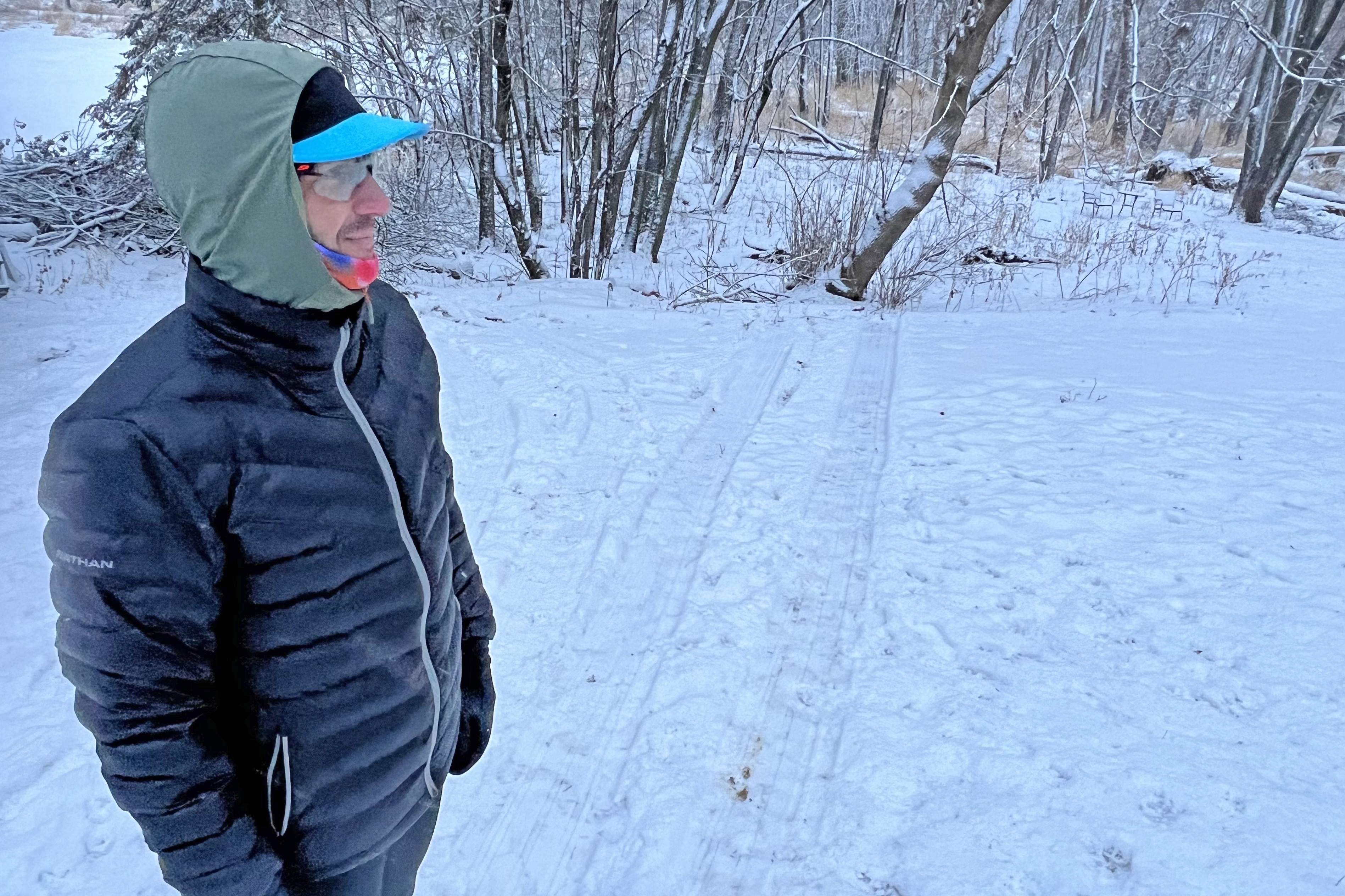
Fabrics
The face fabric of a down jacket is almost always made from a synthetic fibre, either nylon or polyester. These are both synthetic fabrics that are windproof but breathable. They are also comparatively quick drying and can be made water-resistant by applying a DWR (durable water repellent) finish. Their tight weave is also good at preventing the fine clusters of a down jacket from escaping. Generally, down jackets employ these fabrics in lighter weights than waterproof shells to ensure good packability. This limits their durability and toughness, although modern innovations such as ripstop threads can improve these characteristics. But generally, a down jacket is a more delicate layer than most other bits of outdoor clothing, and as a result it should be treated with greater care.
Features
Since your hands and head tend to get cold as well as your core, most of the best down jackets have insulated hoods and handwarmer pockets, which are both useful features. They’re less important if you’re wearing one as a midlayer with a shell over the top, since your shell is likely to have its own hood and pockets will be less accessible anyway. Some users prefer a puffer jacket without a hood, as this can make them easier to wear as part of a layering system, and in any case, most hikers and climbers will carry or wear a warm beanie. But roomy pockets into which you can stuff hats and hiking gloves when you’re not wearing them are worth having – as is a chest pocket, ideally inside the jacket, for keeping valuables or a smartphone safe.
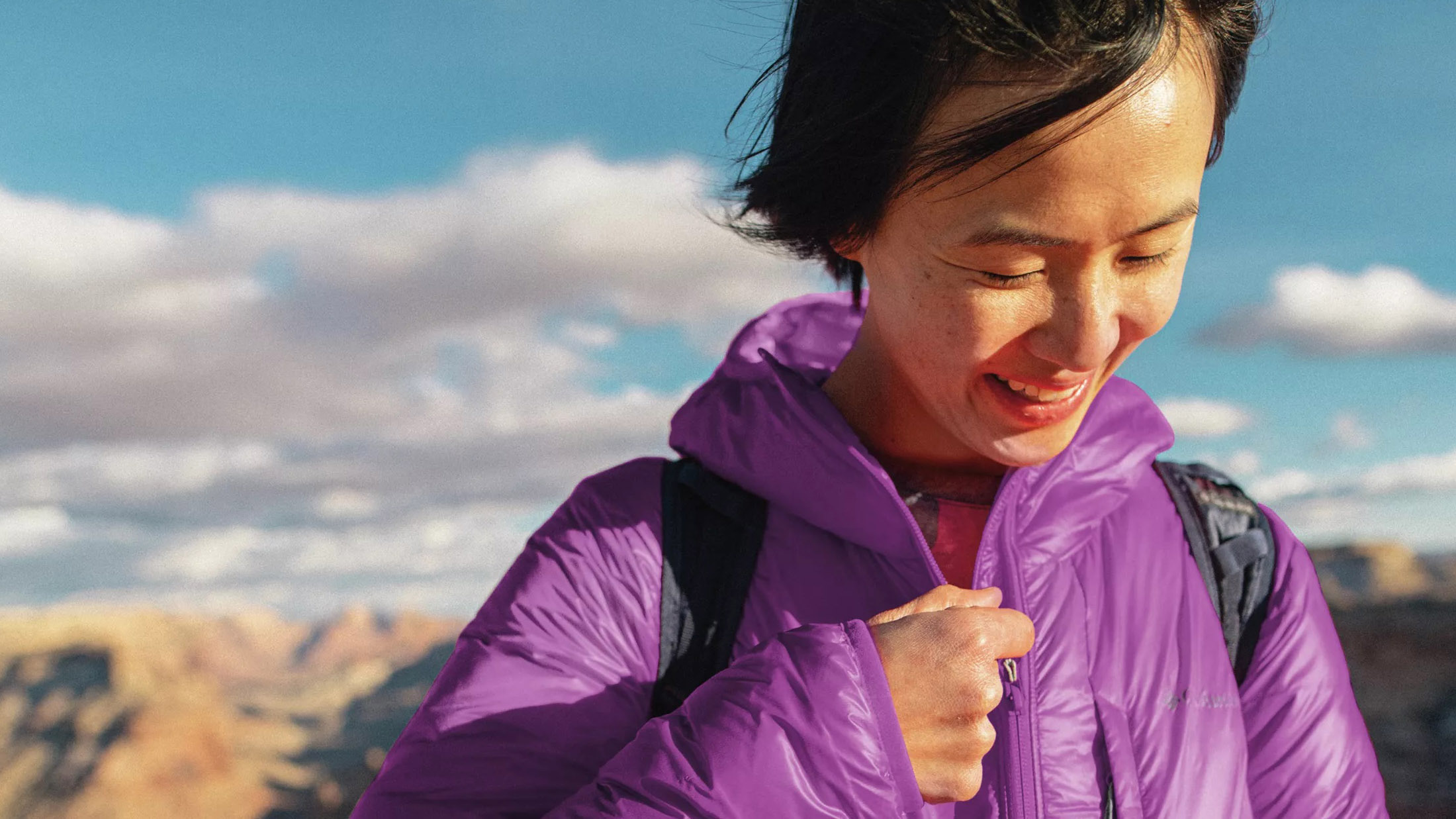
Weight and pack size
Since down jackets are often carried as extra layers to throw on when things turn chilly, weight and pack size can be important considerations. A heavy and bulky jacket that takes up almost all the space in your pack and weighs you down is not particularly practical. That’s why warmth for weight and compressibility (or packability) are seen as so important. The highest-performing fills offer superb warmth for weight ratios and are also very compressible to ensure a small pack size. Most jackets are also provided with a stuff sack or sometimes have an integrated pack pocket so you can stow them away neatly and efficiently.
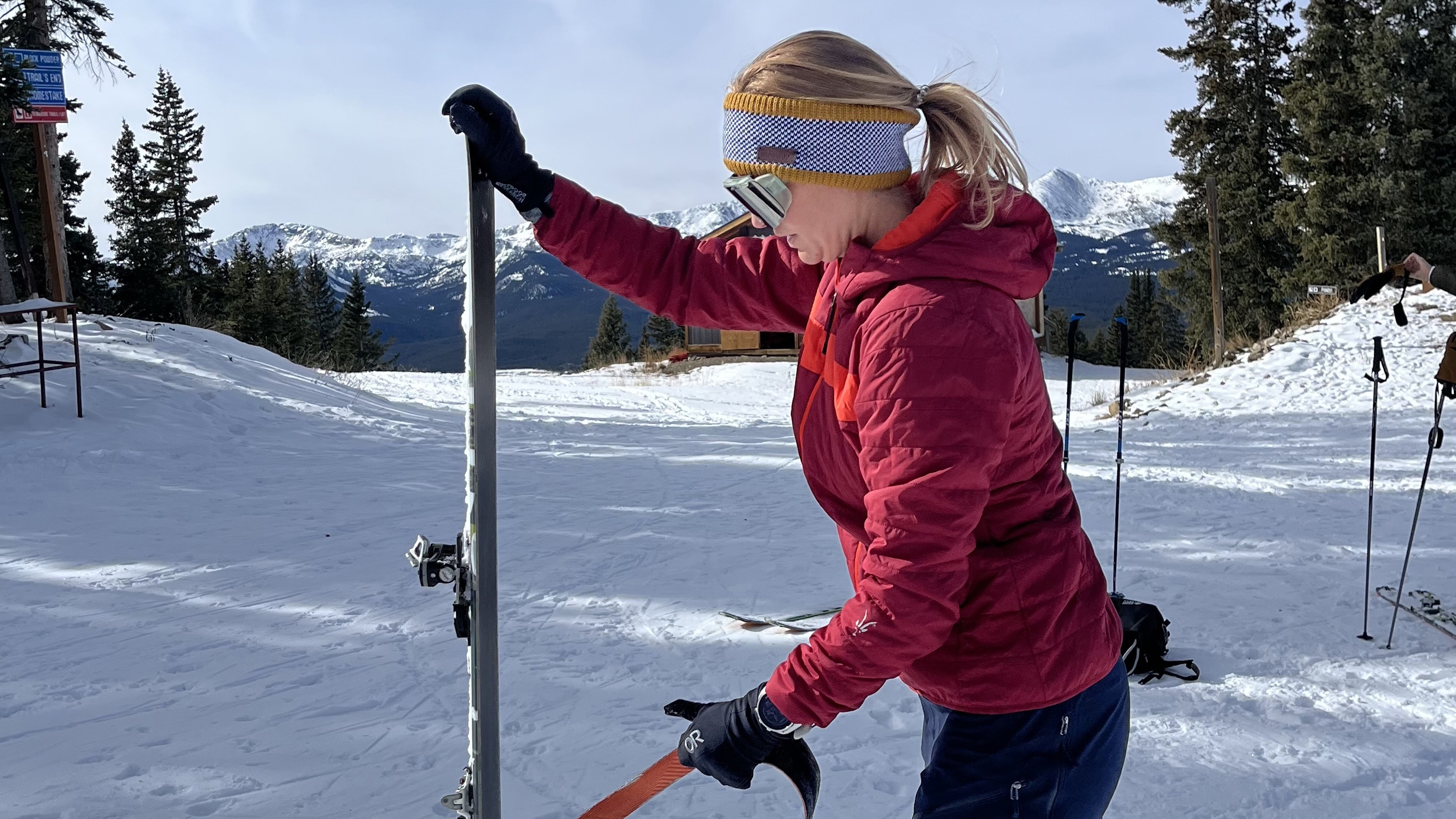
Fit
The thermal efficiency of a down jacket is greatly influenced by how it fits. Size it too big, and you’ll have plenty of dead air inside the jacket to try and warm up. Loose fitting cuffs, hems and hoods can also leak vital heat. On the other hand, a jacket that is too tight may not allow the fill to loft effectively, limiting its warmth. This can also have a bellows effect, when the movements of your body effectively push trapped warm air out of the jacket.
Generally, a down jacket should allow room for a baselayer and a fleece underneath. If you plan to wear it as a midlayer, it should be trim enough to fit underneath your windproof or waterproof shell. If you plan to wear it as an overlayer, similar to a climbers’ belay jacket, you might want it to be a little more accommodating.
What to do with your old jacket
Natural down can be re-used in new products, so don't throw out your old jacket. If it's not in good enough condition to pass on to another wearer, lots of retailers will be happy to take it off your hands. In the UK, Rab and Alpkit both have programs for recycling down, and if you're in the US Uniqlo has you covered.
- The best hiking boots: footwear for tackling tough terrain, tested and rated
Advnture Newsletter
All the latest inspiration, tips and guides to help you plan your next Advnture!
An outdoors writer and editor, Matt Jones has been testing kit in the field for nearly a decade. Having worked for both the Ramblers and the Scouts, he knows one or two things about walking and camping, and loves all things adventure, particularly long-distance backpacking, wild camping and climbing mountains – especially in Wales. He’s based in Snowdonia and last year thru-hiked the Cambrian Way, which runs for 298 miles from Cardiff to Conwy, with a total ascent of 73,700 feet – that’s nearly 2½ times the height of Everest. Follow Matt on Instagram and Twitter.
- Sian Lewis
- Julia Clarke
- Alex Foxfield
- Kim FullerAdvnture contributor

